歹物仔
Out of Service
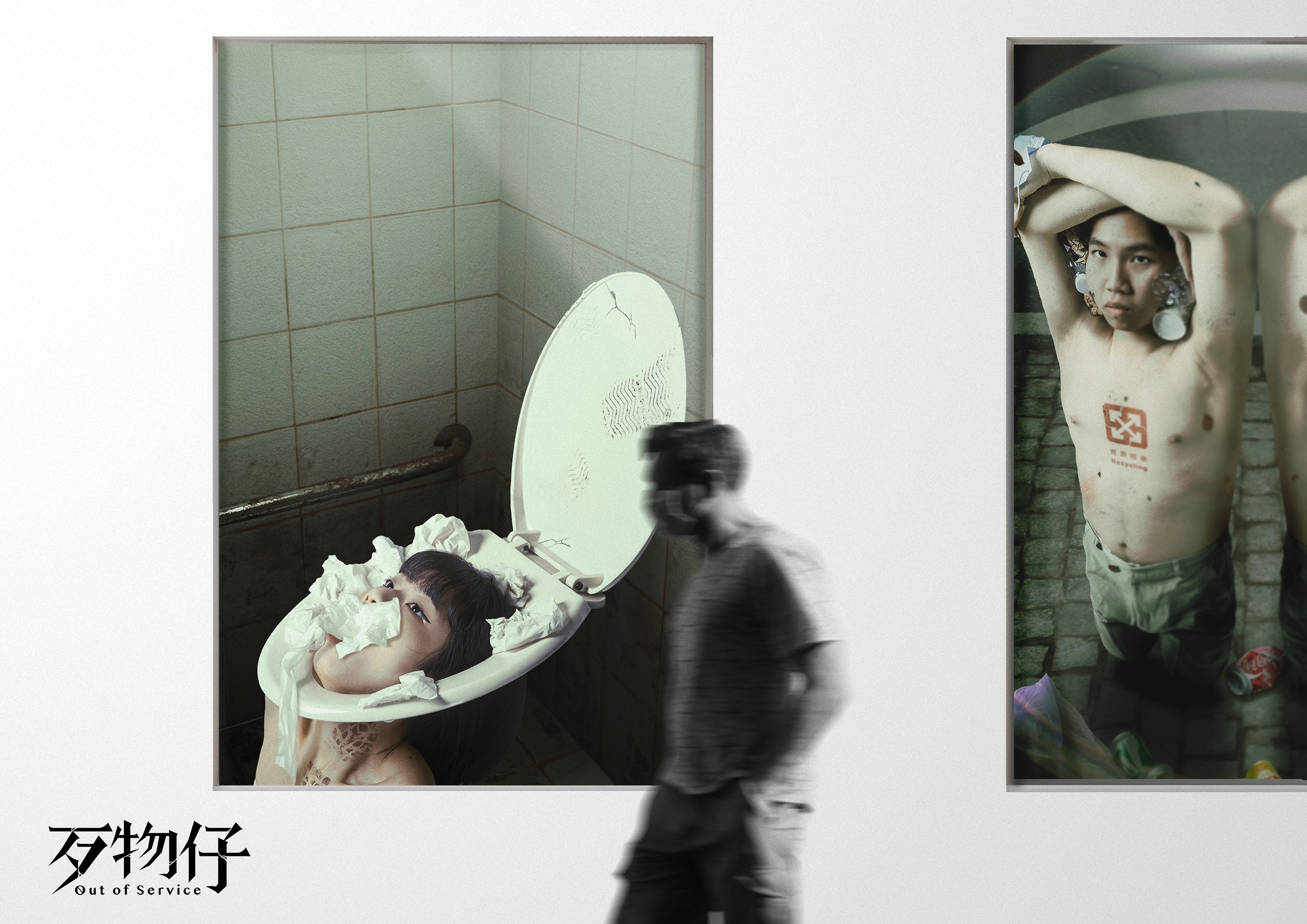
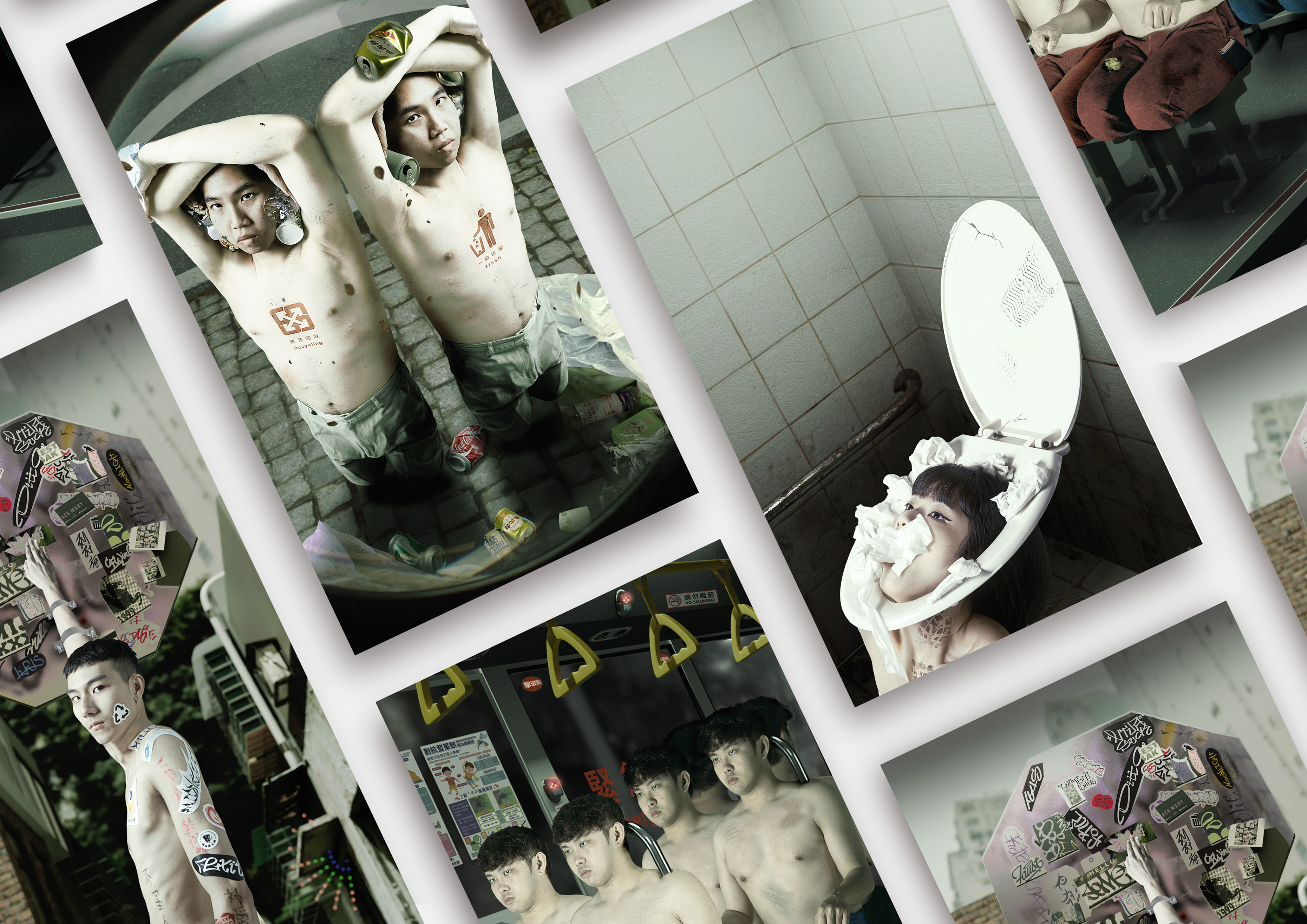
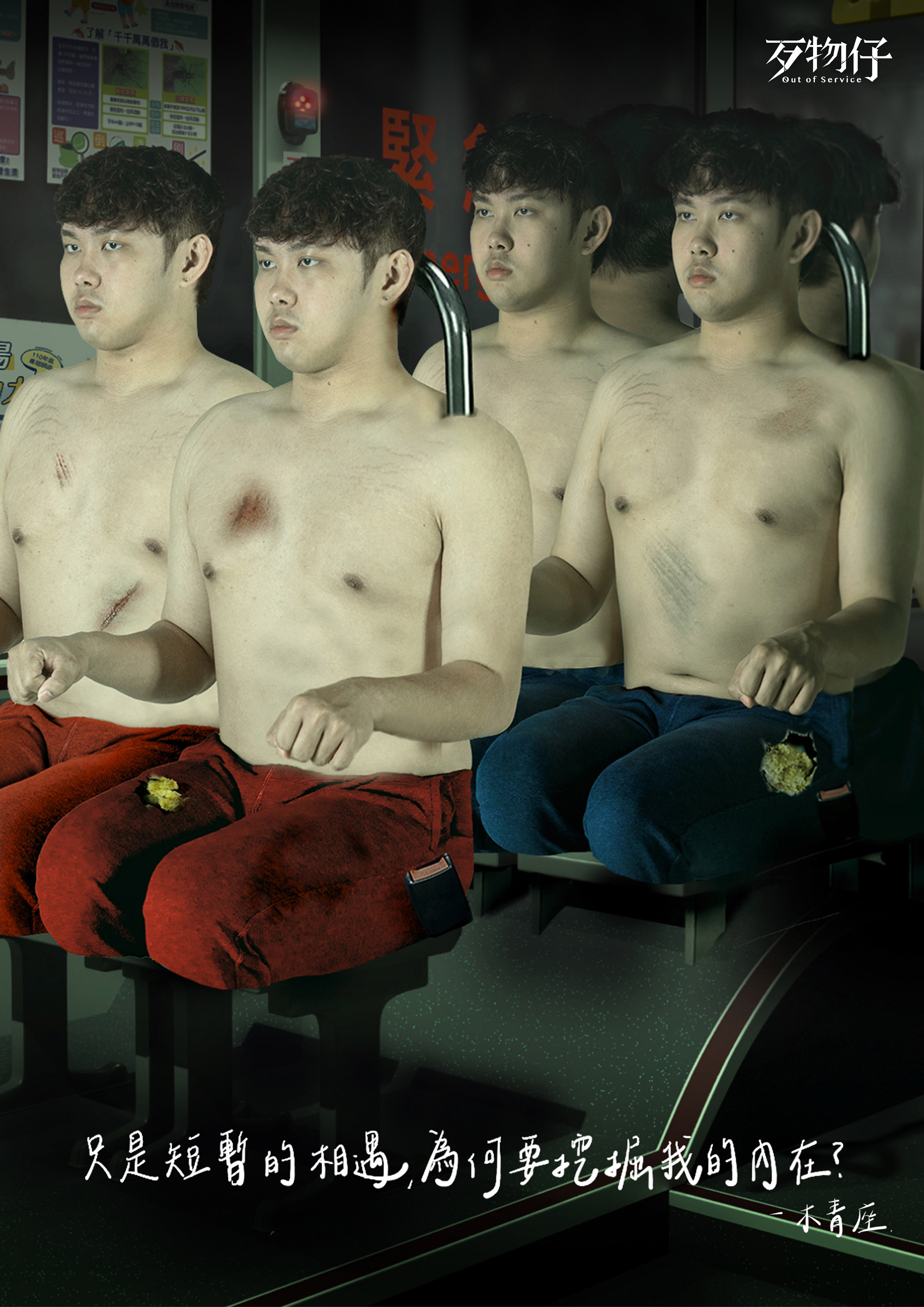
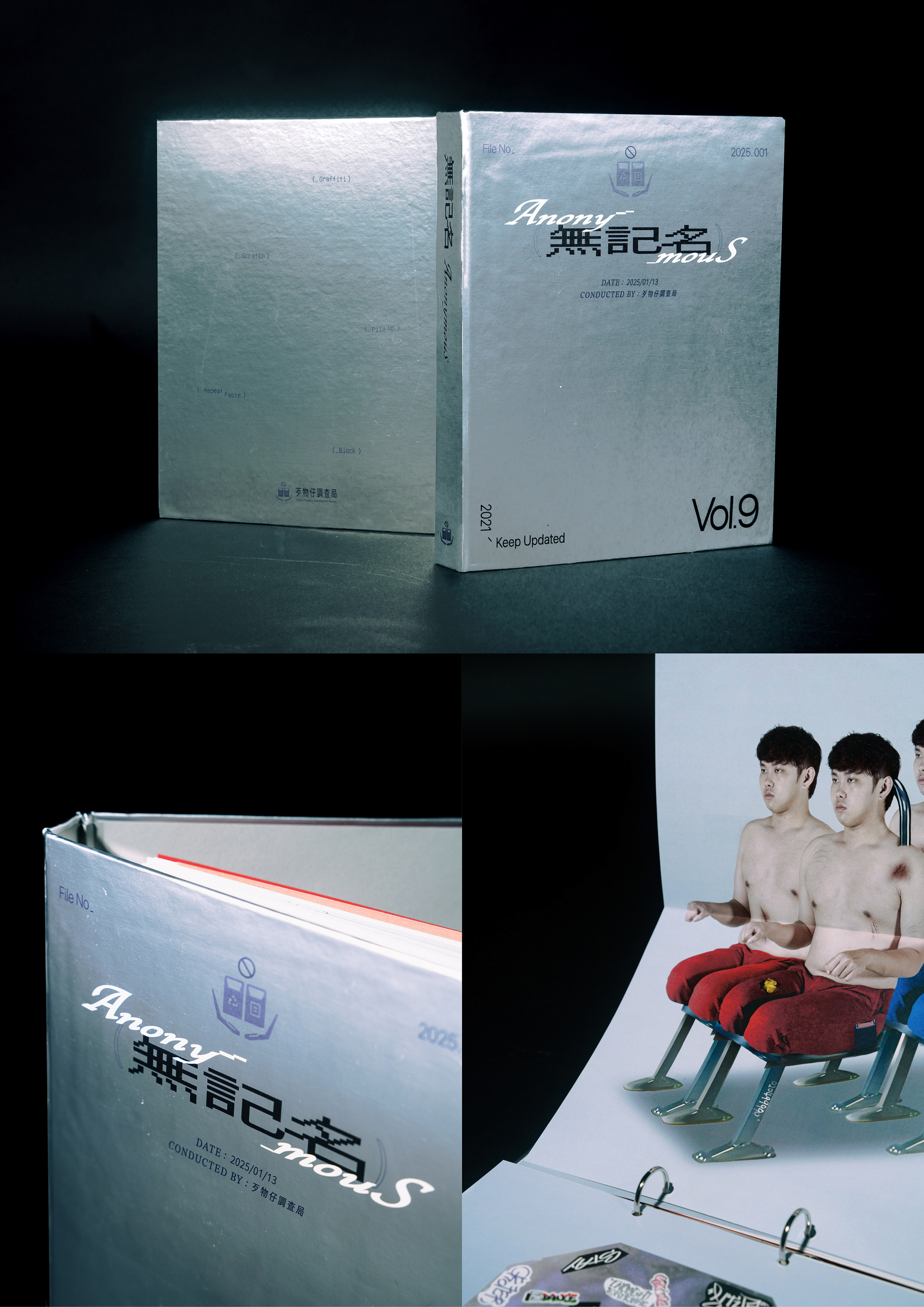
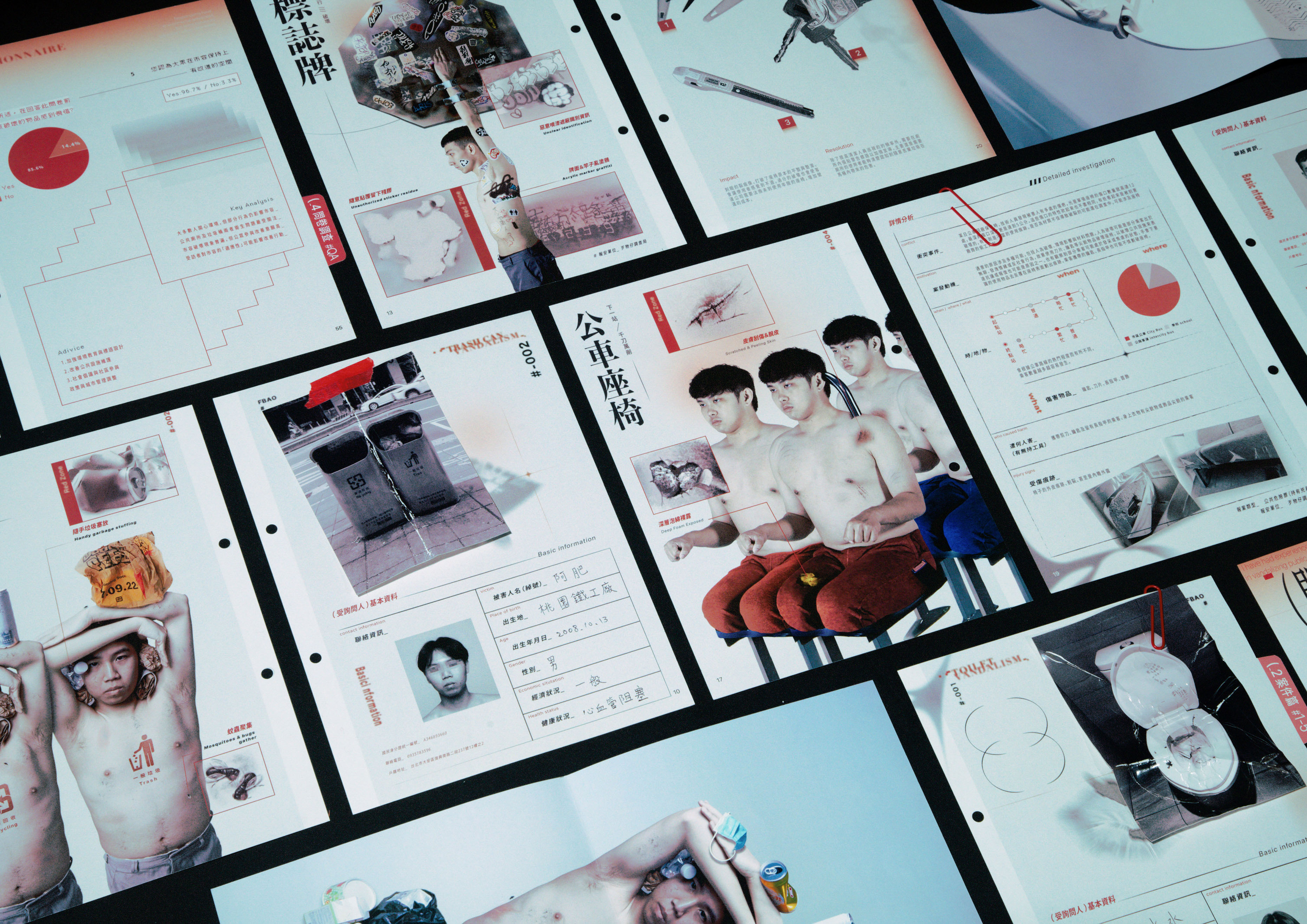
公共設施經常遭受人為破壞,留下難以察覺卻不斷累積的傷痕。我們透過獵奇且貼近現實的表現手法,將人體擬態為九種受損的公共物品,具象化「傷痛」,以視覺衝擊引導大眾重新審視這些行為及其社會影響。
本計畫以調查者的視角切入,透過直式短片、筆錄與證物袋,全面呈現公物破壞的問題。短片結合真實場景,以人體擬態強化標誌牌的隨意黏貼、公車座椅的刮痕、垃圾桶的垃圾堆積與馬桶的堵塞,讓觀者直面破壞帶來的無聲傷害。筆錄書籍則將九種公共物品擬人化為「受害者」,詳細記錄其背景、損壞痕跡與案件分析,使讀者更深入理解公物破壞的影響。證物袋則收集並包裝破壞行為的關鍵物品進行再販售,以直觀方式喚起對個人行為與公共環境關係的反思。
透過這些設計,我們希望讓人們意識到,每一道劃痕、每一處損壞,都是環境「無聲的控訴」。
Out of Service
Public facilities are often subjected to human-caused damage, leaving behind unnoticed yet accumulating scars. Through a surreal yet realistic approach, we transform the human body into nine damaged public objects, visualizing "pain" to create a striking impact that urges the public to reconsider these actions and their societal consequences.
This project takes an investigative perspective, using short films, case records, and evidence bags to highlight the issue of public property vandalism. The films integrate real-life settings, using body simulations to represent vandalized signboards, scratched bus seats, overflowing trash bins, and clogged toilets. This immersive approach forces viewers to confront the silent damage caused by these acts.
The case record book personifies nine public objects as "victims," documenting their background, damage, and case analysis, offering deeper insight into the consequences of destruction. The evidence bags collect and repackage key items linked to vandalism for resale, encouraging reflection on personal behavior and its impact on the public environment.
Through these designs, we aim to reveal that every scratch and every act of damage is a "silent protest" from the environment.
國立臺灣藝術大學 視覺傳達設計系
(四年級)
劉高擇雨
國立臺灣藝術大學 視覺傳達設計系
(四年級)
黃品豪
國立臺灣藝術大學 視覺傳達設計系
(四年級)
石林蓁
國立臺灣藝術大學 視覺傳達設計系
(四年級) 指導老師 李尉郎
林俊傑